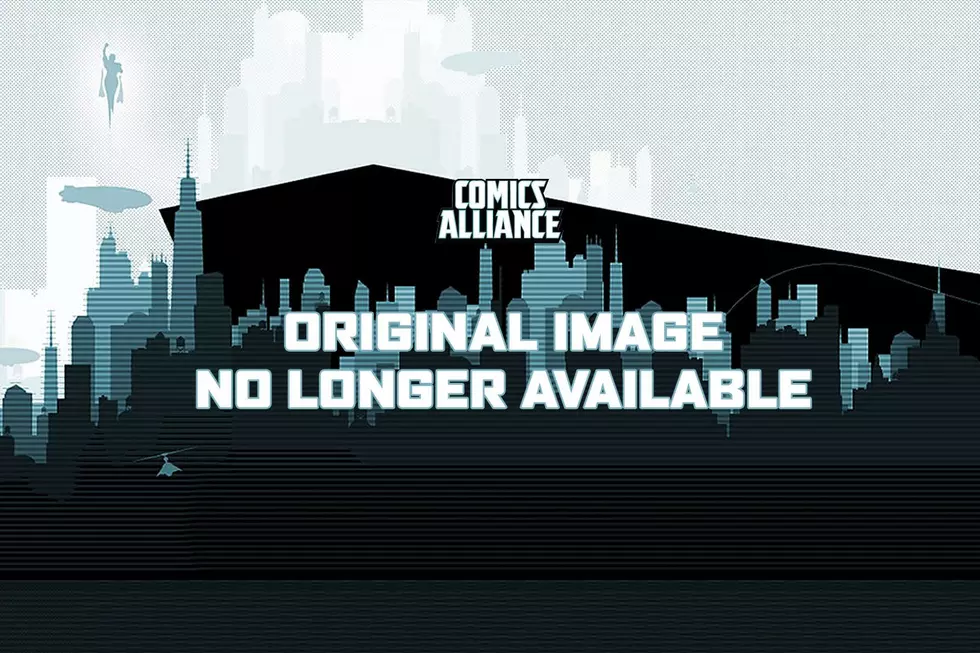
Where’s the Money in Comics? This Survey Breaks it Down by Gender
On his new site SKTCHD, David Harper, formerly of Multiversity Comics, is continuing to write his signature longform pieces on the comic book industry, and on June 16 he posted the results and his analysis of his survey of comics professionals. The main analysis piece is well worth reading, as it breaks down responses about everything from income, to free time, to publisher relations. Harper drilled down further, however, to focus on the relationship between gender and income in the comics industry.
First, some caveats: There are limitations on the reliability of this survey, which Harper notes himself. The 186 respondents were self-reporting. Respondents could select multiple gender options, or none at all, so the results don't provide a full portrait of the intersection of gender identities.
More than two-thirds of respondents identified as male and less than 10% identified as trans or “other.” This makes the sample size of women and trans people quite small. Also, in the gender drill-down, Harper combined trans, nonbinary, and agender people into a single group (so I will refer to this group a TNA, thought it appears as simply “trans” in the graphs). Additionally, the respondents were not required to answer all of the questions, so without knowing how many men, women, and TNA people answered each question, it is impossible to extrapolate the number of people that each percentage represents.

Harper writes that one of the questions he sought to answer with his survey is, “Is gender a determinant for how much an artist earns?” and on the surface, the answer seems pretty clear. Asked whether their comics work earned enough for it to be their only job, 51.25% of men answered “Yes,” while only 16% of women and 12.5% of TNA people did. Large majorities of women and TNA people reported earning less than $12,000 per year for their comics work --- more than 70% for women and nearly 90% for TNA --- while just about 35% of men reported the same.
There are outliers, as well --- there is a larger percentage of women in the $100,000 to $199,999 range, but only men in the $200,000 to $1,000,000 range.
Harper places these numbers in the context of years of experience and the type of work comics artists do. While those with three or fewer years of experience in the comics industry are the largest group for all respondents, the percentages are higher for women and TNA people. Nearly 30% of men, more than 50% of women and more than 55% of TNA people reported being in the beginning stages of their careers. No TNA people reported more than ten years of experience in comics, and fewer than 5% of women report fifteen or more years of experience.
However, Harper determines that the disparity between men’s, women’s, and TNA people’s income comes down to format. Men are far more likely to work on “floppies,” or monthly comics: more than 50% of men, in comparison to just under 20% of women and just over 20% of TNA people. The pay for floppies is simply better than any other format. More than 50% of respondents (all genders combined) who indicated floppies are the primary format they work in reported that they can make a living solely on their comics work. That is true for about 35% of people for whom graphic novels are their primary format and less than 20% of artists who work primarily in the webcomic format.
Nearly the same percentage of men and women primarily work in the graphic novel format, with TNA outpacing them by about 10%. The biggest gap is in webcomics, a format more than 40% of both women and TNA people reported working in, while fewer than 15% of men did. Webcomics are largely and unpaid format, published on personal websites, Tumblr, and a few webcomic collective sites.
How then can more parity between genders be achieved in the comic book industry? Perhaps by investigating the questions Harper concludes with:
...why is it that non cis male artists who responded were so concentrated in webcomics and graphic novels? We know webcomics have a lower barrier to entry, while floppies have gatekeepers that are largely cis white men. Is that a factor, or is it simply a question of interest?
Check out the original post at SKTCH for more graphs.
More From ComicsAlliance









